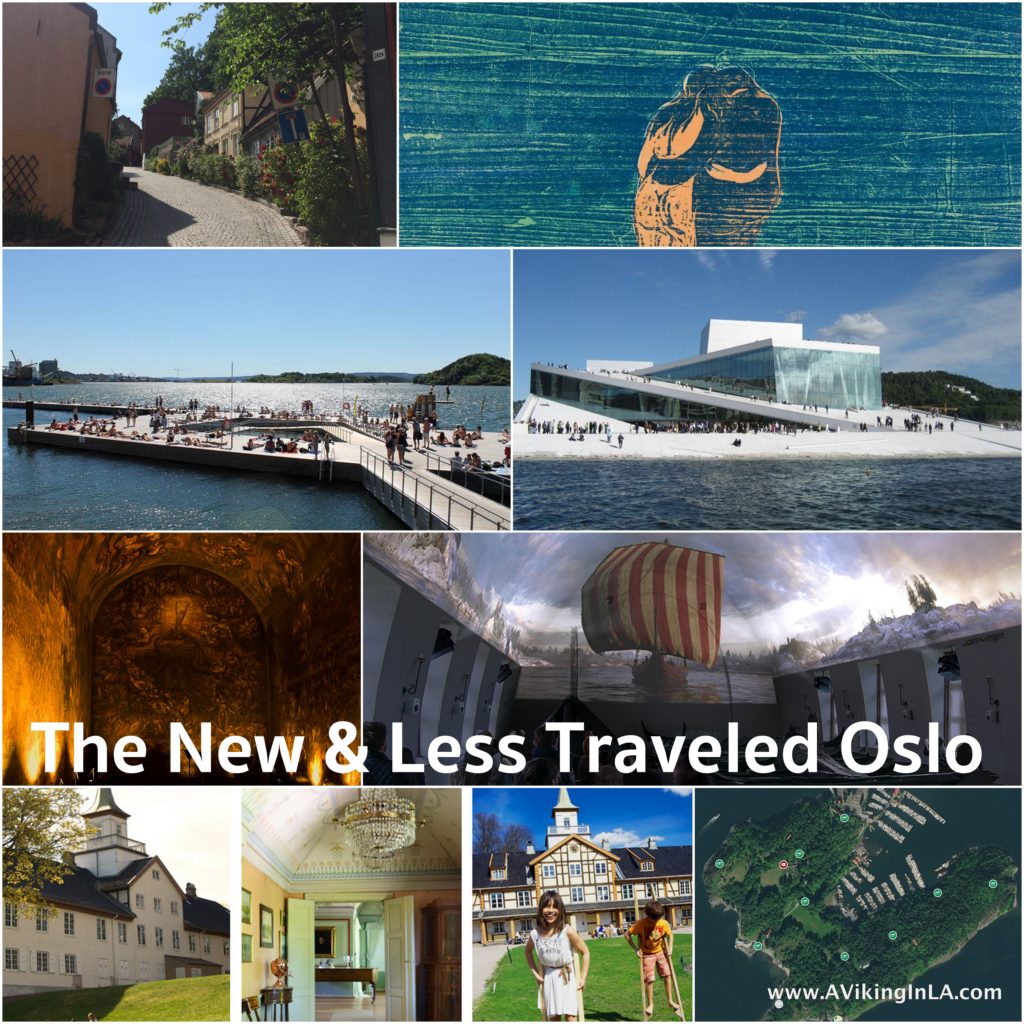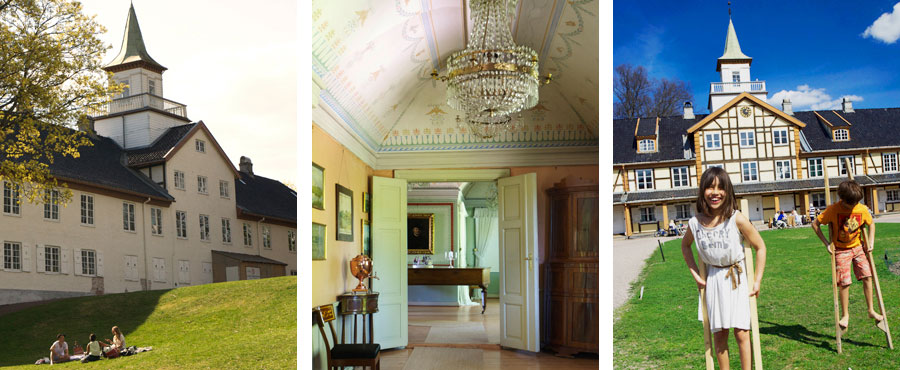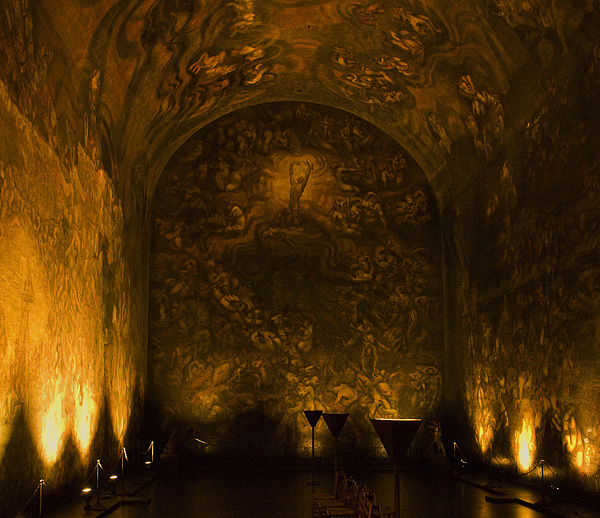 Seeing Vulkan Bee Garden at Mathallen was high on my wishlist for this summer’s visit to Oslo. These urban beehives are not your ordinary beehives. They are an art installation as much as a beehive. The Vulkan beehives were designed by Norwegian architecture firm Snøhetta, the same firm that designed Oslo’s National Opera House, New York City’s National September 11 Memorial Museum Pavilion, and so many other interesting projects around the world.
Seeing Vulkan Bee Garden at Mathallen was high on my wishlist for this summer’s visit to Oslo. These urban beehives are not your ordinary beehives. They are an art installation as much as a beehive. The Vulkan beehives were designed by Norwegian architecture firm Snøhetta, the same firm that designed Oslo’s National Opera House, New York City’s National September 11 Memorial Museum Pavilion, and so many other interesting projects around the world.
I remember reading about Oslo creating the world’s first highway for bees a couple of years ago and feeling great pride that my country was doing that. The bee highway’s aim was to “give the insects a safe passage through the city” by providing food and shelter as they traversed the city from one end to the other. This was not a government initiative, but rather one by ByBi, an urban guild of beekeepers. Participants in the project are varied – businesses, schools, associations, and private individuals. Everyone is encouraged to build bee-friendly feeding stations and accommodations in the city.

The Vulkan beehives were installed in 2014. As explained by Vulkan on their page about the bee garden, “The natural honeycomb geometry was the inspiration for the form and pattern, along with the bees own production pattern; the hexagon-shaped cells bees store their honey in. Using a light colored wood with a finish that is honey in tone makes the hives look like big hexagon jars of honey.” Inside the structures are standard foam beehives.
So I made plans to meet my aunt for lunch at Mathallen, a food court with specialty shops and cafes, and a lovely lunch we had. It wasn’t until we were on our way out that I discovered where the beehives were. Next time I’ll see about enjoying my lunch outside Mathallen instead so I can appreciate the beehives a little longer than just passing by. It would also be fun to buy some Vulkanhonning, honey from the Vulkan beehives, while I am there.
 On a related bookish note, I am currently reading a Norwegian novel called Bienes historie by Maja Lunde that I highly recommend. It will be released in the USA as The History of Bees on August 22. The novel includes three storylines which all revolve around the importance of bees, or lack thereof. The first storyline takes place in England in the mid-1850s when beehives are being improved, the second one in USA in 2007 when there is an increase in the number of colony collapse disorders being reported, and the last one in China in 2098 when humans have had to resort to hand-pollination due to the total collapse of bees. I’m really intrigued by the book and am happy that English readers can also enjoy it soon. I encourage you to check it out.
On a related bookish note, I am currently reading a Norwegian novel called Bienes historie by Maja Lunde that I highly recommend. It will be released in the USA as The History of Bees on August 22. The novel includes three storylines which all revolve around the importance of bees, or lack thereof. The first storyline takes place in England in the mid-1850s when beehives are being improved, the second one in USA in 2007 when there is an increase in the number of colony collapse disorders being reported, and the last one in China in 2098 when humans have had to resort to hand-pollination due to the total collapse of bees. I’m really intrigued by the book and am happy that English readers can also enjoy it soon. I encourage you to check it out.
For some insight into the beekeeping at Vulkan beehives, here’s a short video. It is in Norwegian, but the images are worth your time.

 Are you headed to Oslo this summer, and maybe you’re looking for something besides
Are you headed to Oslo this summer, and maybe you’re looking for something besides  Oslo has a very new harbor promenade to explore. It runs 9 kilometers (about 5.5 miles) along the waterfront and hits many of the main sights of Oslo including Tjuvholmen and Aker Brygge, the inner harbor with City Hall and Akershus Fortress, and the Opera House.
Oslo has a very new harbor promenade to explore. It runs 9 kilometers (about 5.5 miles) along the waterfront and hits many of the main sights of Oslo including Tjuvholmen and Aker Brygge, the inner harbor with City Hall and Akershus Fortress, and the Opera House. A few years ago, a cousin of mine recommended a visit to
A few years ago, a cousin of mine recommended a visit to  Museum of Oslo
Museum of Oslo I learned about Emanuel Vigeland Mausoleum from the book
I learned about Emanuel Vigeland Mausoleum from the book  Damstredet and Telthusbakken are two roads known for their well-preserved and inhabited wooden houses built in the late 1700s and the 1800s. They are located near each other in the St. Hanshaugen/Gamle Aker area in central Oslo. There are other sights in the area as well, so a visit to the area can make a worthwhile self-guided walking tour. Very nearby is the medieval church
Damstredet and Telthusbakken are two roads known for their well-preserved and inhabited wooden houses built in the late 1700s and the 1800s. They are located near each other in the St. Hanshaugen/Gamle Aker area in central Oslo. There are other sights in the area as well, so a visit to the area can make a worthwhile self-guided walking tour. Very nearby is the medieval church